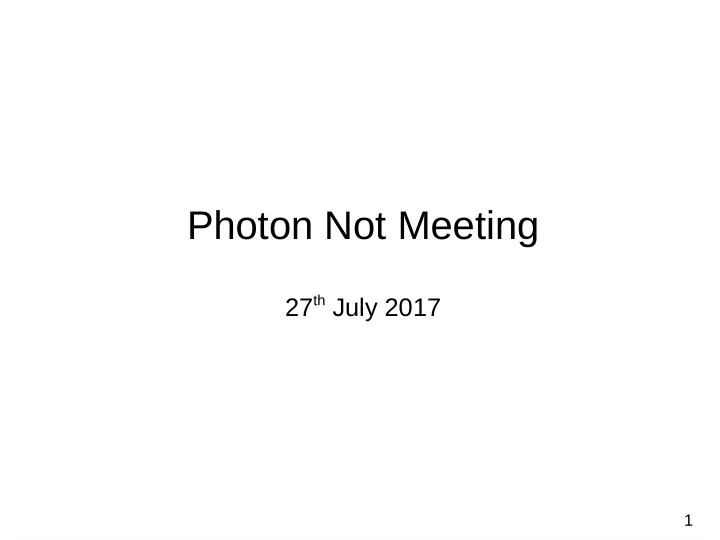

Photon Not Meeting 27 th July 2017 1
TMVA Classification Can now extract the response variable output by TMVA to cut on my events ● and scale selected signal and background events to determine signal/sqrt(background). F o r s e v e r a l T M V A m e t h o d s ● varied the cut on the response distribution to maximize signal/sqrt(background). Largest ● signal/sqrt(background)) method is the adaptive BDT method: Signal efficiency: 33 % – Background efficiency: – 0.07 % signal/sqrt(background): – 0.33 Variables used in TMVA can be found here: ● http://www.hep.manchester.ac.uk/u/murrells/slides/photonmeeting_20_07_201 2 7/variables
Missing Variable Problem and Correlations M o s t v a r i a b l e s a r e ● uncorrelated excluding track variables. Track variables Track correlations result ● from vertices with no associated track where all track variables are set to some “undefined” value e.g. 0, -1, -2, etc. Attempted solution: ● classify vertices with no tracks and vertices with > 0 tracks separately. Correlation matrix for signal sample, background looks similar. 3
w and w/o Track Classifications: Correlations With associated tracks Without associated tracks Run separate classifications for vertices with associated tracks and ● without associated tracks. In the no track case the corresponding track variables are removed from consideration. This completely removes the previously seen track variable ● correlations. 4
w and w/o Track Classifications: Maximizing signal/sqrt(background) With associated tracks Without associated tracks Vary cuts for both responses over a 2d space to find cut combination that ● maximizes signal/sqrt(background). w and w/o track classification improves the performance of most methods ● but worsens the performance of the BDT adaptive method which is the best performing method for this classification also. 5
Classification Summary ● Note that for the work shown TMVA was run without applying event weights (i.e. POT scaling) to each sample. ● Applying these weights causes most methods to perform worse (POT scaling is still applied when calculating signal/sqrt(background)). ● Classifications: – Single: ● Efficiency – signal: 32.6 % background: 0.07 % ● signal/sqrt(backround) = 0.333. ● Largest background eliminated signal efficiency: 1 %. – w and w/o track: ● Efficiency – signal: 31.5 % background: 0.07 % ● signal/sqrt(backround) = 0.332. ● Largest background eliminated signal efficiency: 3 %. ● Note: instances of eliminated background more likely due to be relatively low simulated statistics compared to what would actually be seen in the detector. 6
Future Work ● Found a bug where a variable was not being correctly set to “undefined” with no associated tracks present. Fixing this may cause the w and w/o track classification to perform better. ● Now that conversion to LArLite is no longer a factor I will run over a larger set of simulated BNB + cosmic and cosmic in-time background samples for better statistics. ● Generate MCC8.1 signal sample with simulated cosmics. An MCC8.1 version of in-time cosmics does not exist so may need to generate one of those as well. ● Implement shower dE/dx. 7
Recommend
More recommend